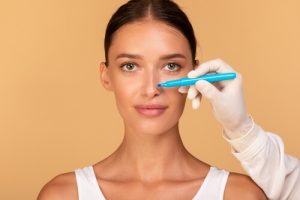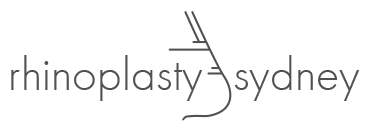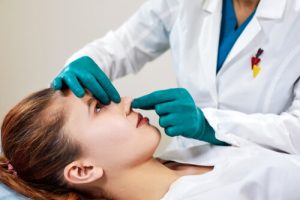In the grand theatre of facial features, the nose plays a leading role. It anchors our face, defines our profile, and, more than we often realise, impacts our self-image and confidence. Yet, many people aren’t entirely happy with this vital feature, seeking changes to its shape, size, or even function. This is where nose job surgery, often known as rhinoplasty, comes into play. A fine blend of art and science, this transformative procedure can reshape not just your nose, but also how you feel about yourself. Whether you’re considering it for cosmetic reasons or to address a medical concern, here’s everything you need to know about the world of nose plastic surgery.
Understanding the Procedure: What is Nose Plastic Surgery?
Nose reshaping surgery, also known as rhinoplasty, is a surgical procedure designed to reshape or repair the nose. It’s one of the most commonly performed plastic surgery procedures worldwide and can be conducted for a variety of reasons.
The impact of rhinoplasty on self-confidence and self-image can be significant. Given that the nose is a central feature of the face, any change to its structure can greatly affect a person’s overall appearance. For many, rhinoplasty offers an opportunity to enhance their natural beauty and create a look with which they feel more comfortable. It can help individuals feel more confident in their appearance, thus improving their self-esteem and overall quality of life.
Why Consider Nose Surgery?
There are several reasons why individuals may consider nose plastic surgery. Here are some of the most common:
- Cosmetic Enhancement: Many people choose rhinoplasty to enhance the aesthetic appeal of their nose and face. This may include altering the size, shape, or angle of the nose to achieve a more balanced and harmonious facial profile.
- Correction of Birth Defects: Nasal surgery can correct congenital issues such as a cleft nose, underdeveloped nose, or other structural abnormalities present since birth.
- Post-Traumatic Reconstruction: Rhinoplasty can be used to repair the nose following injury or trauma, restoring its original shape or improving its appearance and function.
Improvement of Breathing Difficulties: Functional rhinoplasty can address problems like a deviated septum or enlarged turbinates that cause breathing difficulties, frequent sinus infections, or obstructive sleep apnea.
- Revision Rhinoplasty: In some cases, individuals might not be satisfied with the results of a previous rhinoplasty, whether due to aesthetic concerns or functional issues. A revision rhinoplasty is a second surgery performed to correct or improve the results of the first one.
- Aging: As we age, the shape and structure of our nose can change, sometimes becoming droopy or more pronounced. Rhinoplasty can help address these changes and provide a more youthful appearance.
- Boosting Self-Confidence: For some people, altering the appearance of their nose can lead to increased self-esteem and self-confidence, as they feel more comfortable and confident in their appearance.
It’s important to note that while these are common reasons for considering nose plastic surgery, the decision is highly personal and individual. It’s also crucial to have a thorough discussion with a qualified plastic surgeon before making the decision to ensure it’s the right choice for your unique situation and goals.
Types of rhinoplasty surgery
Rhinoplasty, also known as a nose job, can be categorised into several types based on the objectives of the surgery. Here are the most common types of rhinoplasty:
- Cosmetic Rhinoplasty: This is performed primarily to improve the appearance of the nose. As a cosmetic surgery, it can involve changing the size, shape, or proportions of the nose to enhance facial harmony.
- Functional Rhinoplasty: This procedure is performed to improve the function of the nose, usually by correcting issues in the nasal passages that cause breathing difficulties. Common examples include straightening a deviated nasal septum (The septum is the bone and cartilage between the two nostrils) or reducing enlarged turbinates.
- Reconstructive Rhinoplasty: This is performed to restore the structure and function of the nose following trauma, disease, or previous surgery. It often involves using grafts from elsewhere in the body to rebuild the nasal structure.
- Revision or Secondary Rhinoplasty: This is performed to correct issues or enhance results from a previous rhinoplasty. It can be a complex procedure, especially if the initial procedure resulted in functional issues or a displeasing aesthetic outcome, requiring further surgery.
- Ethnic Rhinoplasty: This type of rhinoplasty takes into account the patient’s ethnic background and aims to preserve distinct racial or ethnic features while achieving the desired improvements. It requires a surgeon with a deep understanding of the variations in nasal tip, shape, structure, and nasal skin type across different ethnicities.
- Non-surgical Rhinoplasty: Also known as a “liquid nose job,” this involves the use of injectable fillers to make small changes to the shape or contour of the nose. It’s a temporary, less invasive option for those who wish to avoid surgery.
Each type of rhinoplasty requires a specific set of skills and expertise from the surgeon. Therefore, it’s essential to choose a plastic surgeon who specialises in the type of rhinoplasty you’re considering and has a proven track record of successful outcomes.
The Journey: What to Expect Before, During, and After Surgery
Rhinoplasty is a significant surgical procedure, and it’s natural to have questions about what the process entails. Below is a general outline of what to expect before, during, and after surgery. However, every individual’s experience may differ based on their specific situation and the surgeon’s approach.
Before Surgery:
Consultation: You’ll have an initial consultation with your plastic surgeon, during which they will review your medical history, discuss your goals for the surgery, and explain what the procedure involves. This is an opportunity for you to ask any questions you may have.
- Physical Examination: The surgeon will conduct a thorough examination of your nose, which may include taking detailed measurements and photographs for planning purposes.
- Preoperative Instructions: Your surgeon will provide instructions on how to prepare for surgery. This may include guidelines on eating and drinking, smoking, taking or avoiding certain vitamins and medications, and what to do on the day of the surgery.
During Surgery:
- Anaesthesia: Rhinoplasty is typically performed under general anaesthesia, so you’ll be asleep during the procedure. However, in some cases, local anaesthesia with sedation may be used.
- Incisions: The surgeon will make incisions either inside the nose or across the columella (the thin strip of tissue that separates the nostrils), depending on the type of rhinoplasty.
- Reshaping: The surgeon will reshape the nasal bones and cartilage of your nose according to the goals discussed during your consultation.
- Closing the Incisions: Once the reshaping is complete, the surgeon will close the incisions and possibly place splints in the nostrils to support the new shape as it heals.
After Surgery:
- Recovery Room: After the procedure, you’ll be taken to a recovery room to wake up from the anaesthesia. Some people can go home the same day, while others may need to stay overnight in the hospital.
- Healing: Swelling and bruising are normal after rhinoplasty. You’ll need to rest and avoid strenuous activities for several weeks. Cold compresses can help reduce swelling around the eyes and face.
- Follow-Up Appointments: You’ll have several follow-up appointments with your surgeon to remove splints and monitor your healing.
- Long-Term Results: Full healing and the final result of the rhinoplasty might not be apparent until a year or more after the surgery. Patience is key, as the nose continues to refine and the swelling gradually subsides.
Remember, these steps can vary depending on the individual patient and the specifics of the surgical plan. Always discuss any questions or concerns with your healthcare provider to ensure you have a clear understanding of what to expect from the procedure.
Post-surgery recovery timeline, expectations, and aftercare
Rhinoplasty recovery is a process that can vary from person to person, but here’s a general timeline and what you can typically expect:
Immediately After Surgery
Following the procedure, you’ll likely wake up with a nasal splint or packing inside your nostrils to support the new shape of your nose and reduce swelling. You’ll stay in the recovery room until the effects of anaesthesia wear off, and in many cases, you can go home the same day.
First Week
In the first few days, you may experience swelling, bruising, and some discomfort, especially around your nose and eyes. You may have a headache, and your face may feel puffy. Prescription medication can help manage pain.
During this period, it’s recommended to rest with your head elevated to reduce swelling. Avoid blowing your nose, limit your facial expressions as much as possible, and wear clothes that fasten in the front (rather than clothes that pull over the head).
One to Two Weeks
The external splint and any non-dissolvable stitches are usually removed one to two weeks after surgery. Most visible swelling and bruising will gradually subside during this period, but some minor swelling can persist.
It’s important to avoid strenuous activities, heavy lifting, and any contact sports during this period to prevent any accidental injury to your nose.
Three to Six Weeks
Most patients feel ready to return to work and resume normal activities after two weeks, although healing will still be ongoing. It’s still crucial to avoid any activities that could potentially harm your nose during this time.
Several Months to One Year

In terms of aftercare, follow the specific instructions provided by your surgeon, which will likely include cleaning the incision sites and applying ointment, taking prescribed medications to aid healing and reduce the risk of infection, and attending all follow-up appointments to ensure your nose is healing correctly. It’s also a good idea to maintain a healthy lifestyle during recovery, including a balanced diet and plenty of hydration, to support your body’s healing process.
Choosing the Right Surgeon: Vital Considerations
Selecting the right surgeon for a rhinoplasty is a crucial step, as the success of the surgery and your satisfaction with the results greatly depend on their expertise and experience. Here are some vital considerations when choosing your surgeon:
1. Certification: Make sure the surgeon is board-certified in plastic surgery by a recognised board, such as the American Board of Plastic Surgery. This ensures they have undergone extensive training and meet high standards of practice.
2. Experience with Rhinoplasty: Not all plastic surgeons specialise in rhinoplasty. Look for a surgeon who regularly performs nose surgeries and has a deep understanding of the complex structures of the nose.
3. Before-and-After Portfolio: Reviewing the surgeon’s portfolio of before-and-after photos of previous rhinoplasties can give you a good idea of their aesthetic style and skill level. Make sure their results align with your personal goals and aesthetic preferences.
4. Communication: It’s important to feel comfortable with your surgeon and be able to communicate your desires and concerns openly. The surgeon should listen carefully, provide clear explanations, and not pressure you into making a decision.
5. Reviews and Recommendations: Look for reviews from past patients to learn about their experiences. Personal recommendations from friends or family who had a good experience can also be helpful.
6. Hospital Privileges: Even if the surgery is being performed in an outpatient facility, your surgeon should have privileges to perform the same surgical procedures in an accredited hospital. This shows that their skills and conduct have been reviewed and approved by their peers.
7. Comprehensive Consultation: The surgeon should offer a comprehensive consultation that includes a thorough evaluation of your nose, a detailed discussion of your goals and options, and a clear explanation of what to expect before, during, and after surgery.
Remember, while cost is an important factor to consider, it should not be the primary deciding factor. The expertise and skill of the surgeon directly influence the results of the surgery, and it’s worth investing in the right person for this life-changing procedure.
Embrace Your Transformation with Nose Plastic Surgery
The transformative power of rhinoplasty extends far beyond physical appearances—it has the potential to significantly enhance your self-confidence and overall quality of life. Whether you’re looking to address cosmetic concerns or breathing difficulties, remember that the decision to undergo such a procedure should be thoughtfully considered and well-informed. Our experienced and compassionate team is dedicated to providing the information and support you need to make this important decision.
We invite you to visit or call our clinic for a personalised consultation, where we can answer your questions, discuss your goals, and guide you through every step of the process. Your journey towards newfound confidence begins with that first step—reach out to us today. We’re here to help you embrace your transformation.
References:
https://www.mayoclinic.org/tests-procedures/rhinoplasty/about/pac-20384532
https://my.clevelandclinic.org/health/treatments/11011-rhinoplasty
https://www.plasticsurgery.org/cosmetic-procedures/rhinoplasty/animation
https://utswmed.org/medblog/rhinoplasty-nose-job/
https://www.webmd.com/beauty/cosmetic-procedures-nose-job-rhinoplasty
https://www.hopkinsmedicine.org/health/treatment-tests-and-therapies/nose-reshaping
https://stanfordhealthcare.org/medical-treatments/n/nasal-surgery/types.html


 Improvement of Breathing Difficulties: Functional rhinoplasty can address problems like a deviated septum or enlarged turbinates that cause breathing difficulties, frequent sinus infections, or obstructive sleep apnea.
Improvement of Breathing Difficulties: Functional rhinoplasty can address problems like a deviated septum or enlarged turbinates that cause breathing difficulties, frequent sinus infections, or obstructive sleep apnea. Consultation: You’ll have an initial consultation with your plastic surgeon, during which they will review your medical history, discuss your goals for the surgery, and explain what the procedure involves. This is an opportunity for you to ask any questions you may have.
Consultation: You’ll have an initial consultation with your plastic surgeon, during which they will review your medical history, discuss your goals for the surgery, and explain what the procedure involves. This is an opportunity for you to ask any questions you may have.
Recent Comments